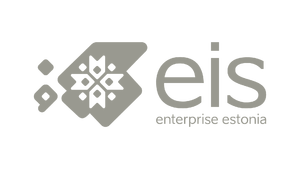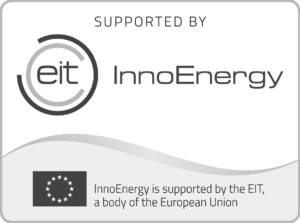11.09.2018
Swimitation: an aquatherapy immersion tank for exercise, therapy and relaxation
Swimitation is a science-based aquatic physical therapy system that provides efficient muscular training, raises the metabolism of body tissues, alleviates various maladies and offers an alternative to deep relaxation.
The idea to create Swimitation was born out of the need of the CEO Heidi Rajamäe-Parik for a private and relaxing water training solution after a long day at work. Mentally and physically drained, she lacked the motivation to go to a gym or public pool to work out with other people. “Swimitation was originally designed to combine wellness and fitness, in order to overcome people’s main exercise excuse – the lack of motivation,” says Rajamäe-Parik.
While the idea for Swimitation is Rajamäe-Parik’s, many physical therapists, designers, engineers and manufacturers have contributed to the final product design. Today the Swimitation team consists of Rajamäe-Parik and physical therapist Aljona Säilev.
Swimitation is a full-body workout in shallow, warm water in a horizontal position. One can also just imitate swimming. Swimitation offers various video training programs that can be followed from a tab-let or a TV attached to a ceiling. The trai-ning sessions were developed by experts in their field – physical therapist Monika Ausmees and Estonian Pilates guru Kaisa Marran.
Swimitation combines the wellness, fitness and medical fields
Originally oriented to wellness and fit-ness, Swimitation is now also aimed at the medical rehab and aquatic physical therapy field. During a testing period of a year and a half, many users provided feedback, saying that just one training session eased their persistent muscle and joint pain, such as back pain and arthritis symptoms. People with a sedentary job often found that the workouts improved wrist, hip and knee function.
Aquatic physical therapy is a branch of physical therapy that has seen strong growth in the last 20 years. It is based on water’s 3D resistance and 3D cushion which provides weightlessness because water offsets gravity. Exercising in this kind of environment with loose joints, increased blood circulation and increased body tissue metabolism is very efficient. Swimitation has the added benefit of warm temperature and body trunk support for a slow and controlled workout. A slow workout in warm water ensures efficient training of the core and slow twitch muscle fibers, which are usually neglected. To this point, aquatherapy immersion tanks have not seen much use because they are inconve-nient and offer limited possibilities.
In collaboration with physical therapists, designers and engineers, Swimitation was developed to provide ideal conditions for relaxation and training. The pool has an ergonomic design that enables safe and comfortable whole-body movements. The specific feature of Swimitation is the integrated deck chair in the middle of the bath for the full support of the body trunk – the user is anchored and can freely and effectively move their arms and legs without tension in any part of the body. In contrast, the old Hubbard-type immersion tanks used in rehabilitative care are designed so that users have to support themselves using their arms or are suspended by a head rest, which causes tension in the neck.
The Swimitation tank only uses approximately one cubic meter (264 gallons) of water and the water temperature is there-fore quickly adjustable. The recommended water temperature is 34º C (93º F), the so-called indifferent temperature for the human body. At this temperature the body is neither warm nor cool, helping the muscles and other tissues to focus only on performing movement in the water. The temperature of 34ºC also frees up the brain’s “thermostat” function, so that all resources are directed to the exercise and relaxation.
Aquatic therapy has been proved to be among the most efficient rehabilitative care methods for treating musculo-skeletal ailments and neurological disorders. Athletes have shown interest in Swimitation – athletes need aquatic physical therapy for injury recovery, including post-operation rehabilitation, and muscle and joint recovery from training.
In treatment of neurological diseases and people with disabilities, aquatic physical therapy is known to have a therapeutic as well as stress- and depression-alleviating effect. Aquatic physical therapy also has an important role in rehabilitation from cardio-vascular diseases, as the water compresses body tissues and increases venous circulation, which results in improved supply of blood to the heart. Swimitation allows the patient to move at a slow pace, at a low pulse rate.
“When the brain senses complete safety – from the risk of falling or the need to react and from even the cold or heat, it releases the joints. This improves the metabolism of the tissue fluids and increases the blood flow in impaired and inflamed areas, helping tissues to take in nutrients and get rid of waste. This alle-viates symptoms, pain and inflammation,” says Rajamäe-Parik.
Future plans start with America
According to Rajamäe-Parik, Swimitation is meant for health and sports centres as well as for home spas. Estonia is not the ideal market for Swimitation. Rajamäe-Parik plans to take the product to the U.S. market and other English-speaking markets. “Wellness and fitness trends often start in the United States. American customers appreciate novelty the most,” says Rajamäe-Parik. The plan is to find business partners in the US and develop a franchise. “In my vision households will have home spas which make relaxation and exercise appealing and a part of everyday life. In future, the training, wellness and therapy options will come to homes,” says Rajamäe-Parik. Swimitation’s final goal is to create a franchise.
In my vision households will have home spas which make relaxation and exercise appealing and a part of everyday life. In future, the training, wellness and therapy options will come to homes.
Swimitation is currently available at the Marienthal Clinic in Tallinn. There is also the plan to build an aquatic sports therapy spa in collaboration with the developers of the Healbed vibro-acoustic bed – part of the Estonian Connected Health Tech Cluster – and a salt chamber and hydro-massage products. The small combined solution is attractive for hotels that do not have the option for a big public spa. The mini-spa would be run via auto-mated ser-vices by one person and have significantly low staff costs.












